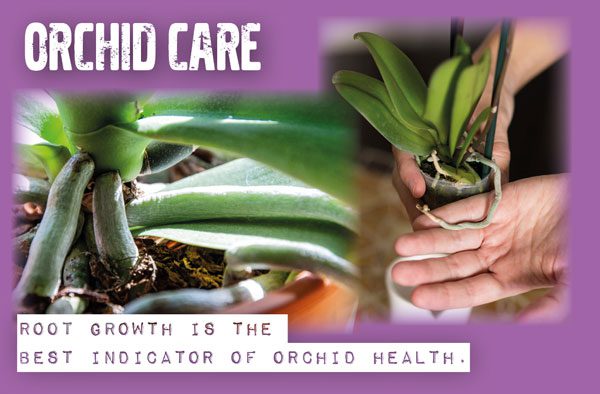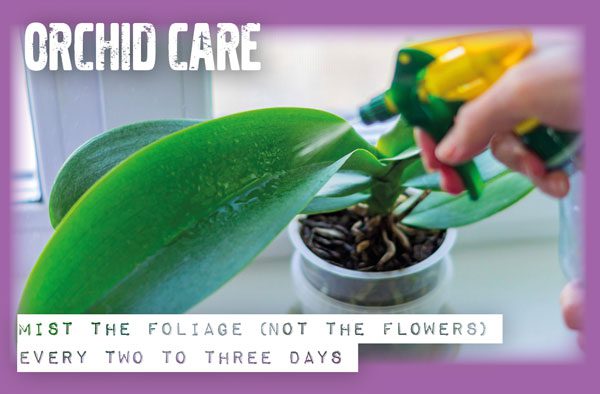With over 880 different types and over 22,000 species, orchids are among the most diverse flowering plant families. However, there are only several dozen hybrid species widely produced and available at local nurseries and florists.
Orchids, including Moth orchids, Dendrobium orchids, Paphiopedilum orchids, Oncidium orchids, Vanda orchids, and Cambria hybrid orchids are all easy to grow at home and produce beautiful exotic blooms.

Even when growing these species, successful orchid care is a skill, and understanding the requirements for light, food, humidity, water, air movement, and protection from pests is essential. Here are some top tips for beautiful blooming orchids!
Light
Orchids have varying light needs, with most requiring bright but indirect sunlight. Some orchids, such as Vanda orchids, however, do require full sun. For those needing bright but indirect light, east or west-facing windowsills are perfect. A North window can give too little light for low light orchids to bloom, and a South window may need some shading. Too much sun can scorch the leaves. If this occurs, don’t remove the damaged leaves unless the plant has several other healthy leaves.
Humidity
Orchids originate and thrive in humid, tropical regions. In most modern homes, the air is dry, so mist the foliage (not the flowers) every two to three days with lukewarm water.
If possible, gather orchids together to raise the humidity. Orchids also like air movement, and too little may see your orchid succumb to rot. Maintain a balance of both factors for success.
Water
Overwatering is the most common way to kill orchids and the most challenging aspect of orchid care. The right amount of moisture varies with the seasons. Generally, the best method is to drench the plant until water pours from the bottom of the pot, leaving the roots and media very wet. The medium should then dry out by about 90% before re-watering. If in doubt, wait. Too little is better than too much.

Repotting
Root growth is the best indicator of orchid health. Obtaining a proper moisture balance is critical, and many orchid growers choose clear pots so that it’s easier to see when the roots are thriving or in need of a good drenching. Most orchid roots don’t mind the light; some quite like it.
Orchids don’t need regular repotting and often do well when root-bound. However, it would be best if you repotted with fresh medium occasionally. Orchids seem to grow best in ridiculously small pots, so resist the urge to ‘size up’ any more than is necessary to hold the roots.
Pests and Disease
Signs of infestation include sticky leaves or black sooty mold. Insects favor leaves and flower stalks, while mealybugs prefer new leaves. Fungus gnats are also common. Remove pests by using a soapy sponge to clean the leaves. Or use an insecticide.
The best defense for fungal/bacterial infections is to spray the foliage with a fungicide monthly. Cinnamon is an effective and safe solution that can be sprayed or sprinkled lightly around the plant to deter pests.
Sometimes, problems move down into the roots. If your plant doesn’t seem to recover, repotting may be the solution.